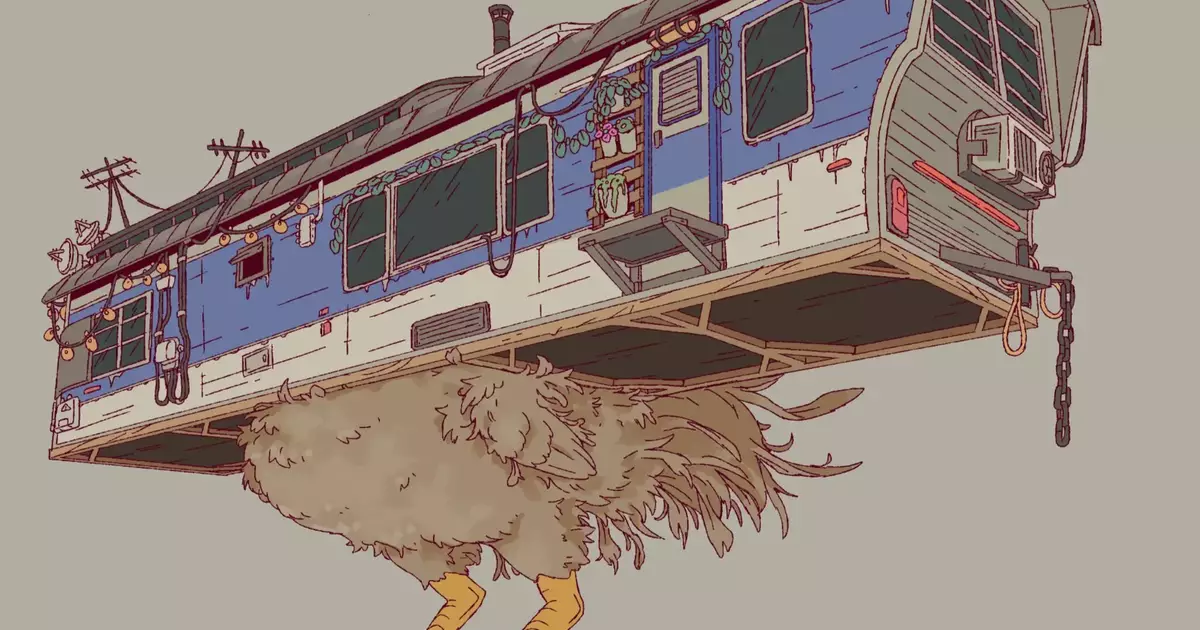In the realm of video games, storytelling has evolved into an intricate facet that melds art and interactive experiences. One studio that exemplifies this evolution is Giant Sparrow, noteworthy for its acclaimed title, *What Remains of Edith Finch*. This game presents a tapestry of interactive short stories steeped in tragedy, chronicling the doomed lineage of a family residing within an eccentric treehouse. Building upon that legacy, Giant Sparrow’s forthcoming project aims to dive deeper into the strangeness of nature while maintaining a delicate balance between whimsy and darker themes.
At its core, Giant Sparrow’s upcoming project is an anthology experience focused on a field biologist’s perspective. The concept reportedly draws inspiration from an array of sources, combining elements from nature documentaries, folklore, and early animation techniques. This blend reflects a desire to transcend the typical nature documentary experience, which its founder Ian Dallas critiques as superficial and overly simplistic. Instead of merely observing nature, the intent is to immerse players in a world that feels alive, laden with peculiarities and depth.
Dallas provocatively remarks on the shortcomings of conventional nature documentaries, hinting at a frustration that resonates with many. With too much emphasis on quick transitions between subjects, these documentaries sometimes neglect the subtleties of interconnection within ecosystems. In response, Giant Sparrow seeks to introduce fantastical creatures and scenarios, venturing beyond pedestrian interactions like collecting items or taking photographs. The studio’s penchant for quirkiness is evident in their character designs that range from whimsical interpretations of ordinary animals to bizarre hybrids, suggesting a playful yet thoughtful approach to the biological themes at play.
As much as the game aims to entertain, it’s equally a commentary on the strangeness inherent in biology itself. Dallas notes that they aspire to foster a sense of exploration—a world where surprises await and where players are encouraged to reflect on the bizarre marvels of life surrounding them. This perspective invites players to see familiar creatures through a lens of curiosity and intrigue.
One vivid example discussed is an in-game scenario involving a player attempting to guide a giraffe in a specific manner—a task that demands patience and dexterity. Such gameplay mechanics are poised to challenge conventional gaming interactions, promoting a dynamic of cooperation rather than mere competition. The analogies to chessboards—games that often feel overly structured and predictable—illustrate the desire for a fluid world, one where the unexpected can thrive.
However, the horror aspect embedded within the game’s narrative should not be overlooked. Dallas describes a visceral reaction to certain creatures, pointing to their unique reproductive cycles as sources of both gross fascination and horror. This juxtaposition reflects the complex emotions players may encounter as they navigate the game’s environments. Drawing inspiration from the unfiltered realities of nature, players will likely experience both wonder and disgust—an emotional cocktail that resonates with the unpredictability of life.
A compelling question arises regarding how the animals in the game will be portrayed. Will they be passive entities within the simulation, primarily influenced by the player’s choices, or will they demonstrate a degree of agency? An exploration of biology as a field of knowledge raises other inquiries about how species are represented and whether these portrayals challenge or reinforce the anthropocentric perspectives often found in gaming.
Indeed, there is a layered complexity to the narrative that goes beyond mere gameplay. It provokes inquiries into the relationships humans forge with the natural world—how curiosity and exploitation might coexist in digital reflections of biological life. Echoing themes from speculative fiction such as Jeff VanderMeer’s work, the project hints at an intertwining of observation, interaction, and philosophical contemplation.
Ultimately, Giant Sparrow’s next project is emblematic of a new frontier in gaming narratives—experiences that blend emotional resonance and thematic depth with playful exploration of life’s quirks. As audiences await its formal announcement, the tantalizing glimpses into the game’s world evoke a sense of wonder about the bizarre beauty of existence. This journey promises to be much more than mere entertainment—it seeks to challenge perspectives and inspire reflection on the uncanny oddities of the organic world we inhabit.
As development progresses, it will be interesting to observe how Giant Sparrow continues to define their artistic vision and whether they can successfully capture the multifaceted nature of the life they wish to portray. The artistic interplay of whimsy and horror holds promise for an experience that is both thought-provoking and richly engaging, embodying the essence of what video games can achieve as a storytelling medium.

